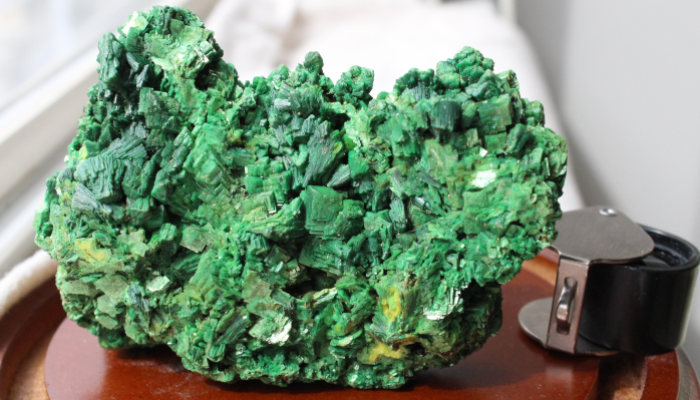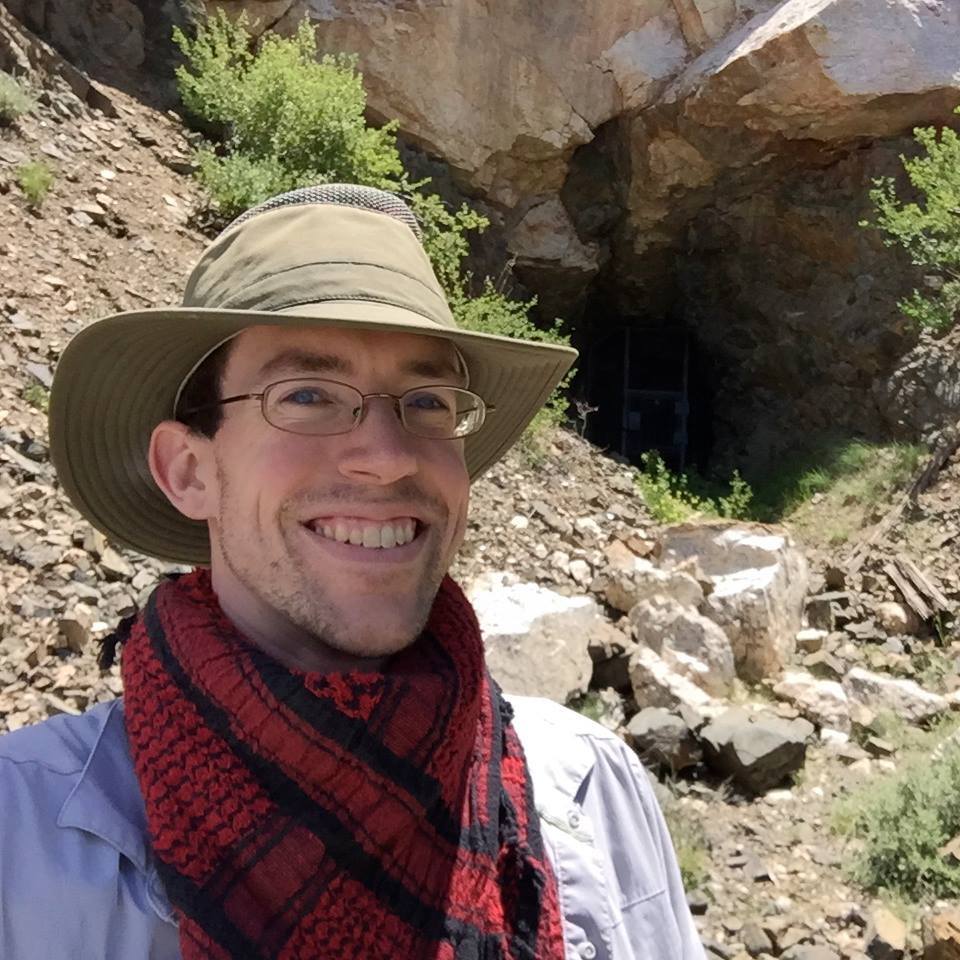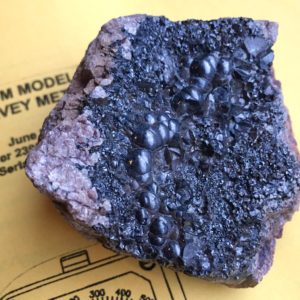
Most of us have been directly or indirectly involved in outreach activities, often relying on shiny rocks to capture people’s fascination. This week, Aaron Van Alstine, a member of the Memphis Archaeological and Geological Society, a passionate rockhounder, and moderator of the sub-reddit on radioactive rocks, shares his views on why all earth scientists need a rock collection and how to start it.
 When I first met my wife, who was at that time doing her doctoral work in geophysics, I excitedly blurted out the question that immediately springs to everybody’s mind when they meet a real-life earth scientist: “How big is your rock collection?”
When I first met my wife, who was at that time doing her doctoral work in geophysics, I excitedly blurted out the question that immediately springs to everybody’s mind when they meet a real-life earth scientist: “How big is your rock collection?”
It knocks the wind out of your sails when you ask a genuine, enthusiastic question from the heart and the other person just stares at you like you have three heads. My wife, it turns out, did not have a rock collection. Not only that, but the idea of collecting rocks had never even crossed her mind. And over the course of time, I made a startling discovery: many geophysicists do not have a rock collection.
People have certain expectations that professionals will embrace the symbolism of their work. If a film protagonist is seated in a doctor’s office, there will undoubtedly be a human skeleton grinning in the corner; if the hero goes to chat with an astrophysicist about deflecting an incoming asteroid, she will with absolute certainty have a meteorite paperweight on her desk. Lawyers have their leather-bound encyclopedia sets, artists have their lopsided berets, and pirates have their trained parrots and crippling alcoholism. You have an obligation to present yourself to the public in a certain way, and frankly as a group, I think geophysicists have been coming up short.
Fortunately, this faux pas is easily rectified, and I’ve been asked to address some FAQs that might come up as you begin to surround yourself with the trappings of your profession.
Q: How did YOU start collecting rocks?
My grandfather, a hilarious mountain of a man who once made a living as a geologist and civil engineer, helped me start my rock collection as soon as I was old enough to be trusted not to put the little ones up my nose. As he used to say, it’s important for a young man to have a Proper Hobby to keep him outdoors and out of trouble. So, he presented me with a couple dozen specimens he’d come across in his travels; mostly self-collected, with the rest probably purchased at various rock shops. My collection remained fairly reasonably sized until I discovered that rather than just filling up a jar with crinoid stems gathered by the railroad tracks, you can save your credit card number and simply have your friendly local postal worker bring you a box with amazing sparkly treasures from far-flung localities – something helpful when most of the geology in a 3-hour radius can be concisely described as “mainly mud”.
Q: How do you go about finding rocks outdoors?

Uraninite from Pribram, CZ. A very “hot” specimen from Van’s favorites.
Find collecting sites by using a rockhound’s guidebook, word of mouth, or your favorite internet browser. I’d highly recommend joining a local geology club. Even for those folks lucky enough to live in the right geographic area to collect choice specimens, it’s nice to have somebody show you the ropes to safely, legally, and successfully rockhound. Clubs often have periodic outings – including to sites off-limits to the general public – and having somebody show you what you should be looking for saves a lot of time and effort.
Equipment needs vary by site; hunting for fossils in a stony riverbed might only require a strong backpack and some paper towels to protect your finds, whereas you might not be very successful in a hard rock quarry without a purpose-made rock hammer and eye protection. Bring weather-appropriate gear, plenty of water, and make sure to tell somebody your itinerary and expected time of return. Read up on state and federal rockhounding laws, always secure landowner permission to dig, and follow the Rockhounding Code of Ethics.
Q: What is your favorite mineral?
I’m a big fan of Uraninite, UO2. It can take on an array of shapes, but it’s always satisfyingly dense and jet black. The radioactivity from Uranium and its daughter products is potentially hazardous, but not likely to be an issue with just a few thumbnail-sized samples – provided you don’t lick them, snort them, or sleep with them under your pillow.
Q: Are there any rocks out there for folks more interested in Deep Earth?
Glad you asked. The most obvious answer is Olivine/Peridot, which in the collecting community is commonly encountered as “bombs” of greenish crystalline material yakked out of the mouth of a volcano. Even more interestingly, Olivine also forms crystals in a certain class of Iron-rich meteorites called Pallasites. Cut and polished into a thin slab and held up to bright light, you can see a fascinating “stained glass” effect of greenish crystals glimmering in the metallic matrix; I’ve been told holding a specimen is basically as close as you’ll ever come to touching the core-mantle boundary.
Another interesting feature relevant to geophysicists is Slickensides, which form where two sides of a fault start to grind against each other. Often this occurs as recognizable striations, with or without secondary mineral overgrowth, but rarely movement in multiple planes can grind the opposing faces to a near-mirror finish.
I’d also be remiss to forget about Kimberlite. You aren’t likely to find a sizeable diamond in any Kimberlite you come across, but as above I’ve been told that the experience of actually holding a piece of rock that, over the course of a few hours made the journey from “impossibly deep” to “you can literally hold a chunk of it”, is transformative.
Q: What does Geodynamics mean to you?
I really don’t know. As far as I can tell, Geodynamics is something that happens when people type Greek letters into a computer and hit ‘Run’, then walk away for a day while the computer makes funny noises and gets extremely hot. Possibly some discussion of faults, boundaries, and earthquakes emerges afterwards, but more commonly it seems to be a stream of impressively graphic curses and rude statements about the computer’s motherboard.
Q: Any final advice?
I only ask you to consider your professional image to the public. Gordon Ramsay without the apron is just an English jerk yelling at the people feeding him; please put your proverbial apron on and at least display a few minerals in your office. Whether it’s the color, the luster, the density, or the origin – there’s something in the rockhounding hobby for everybody to appreciate.

